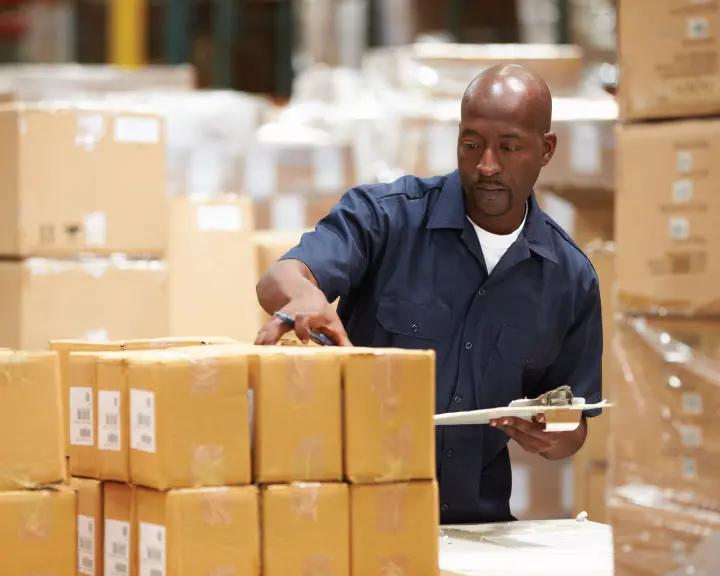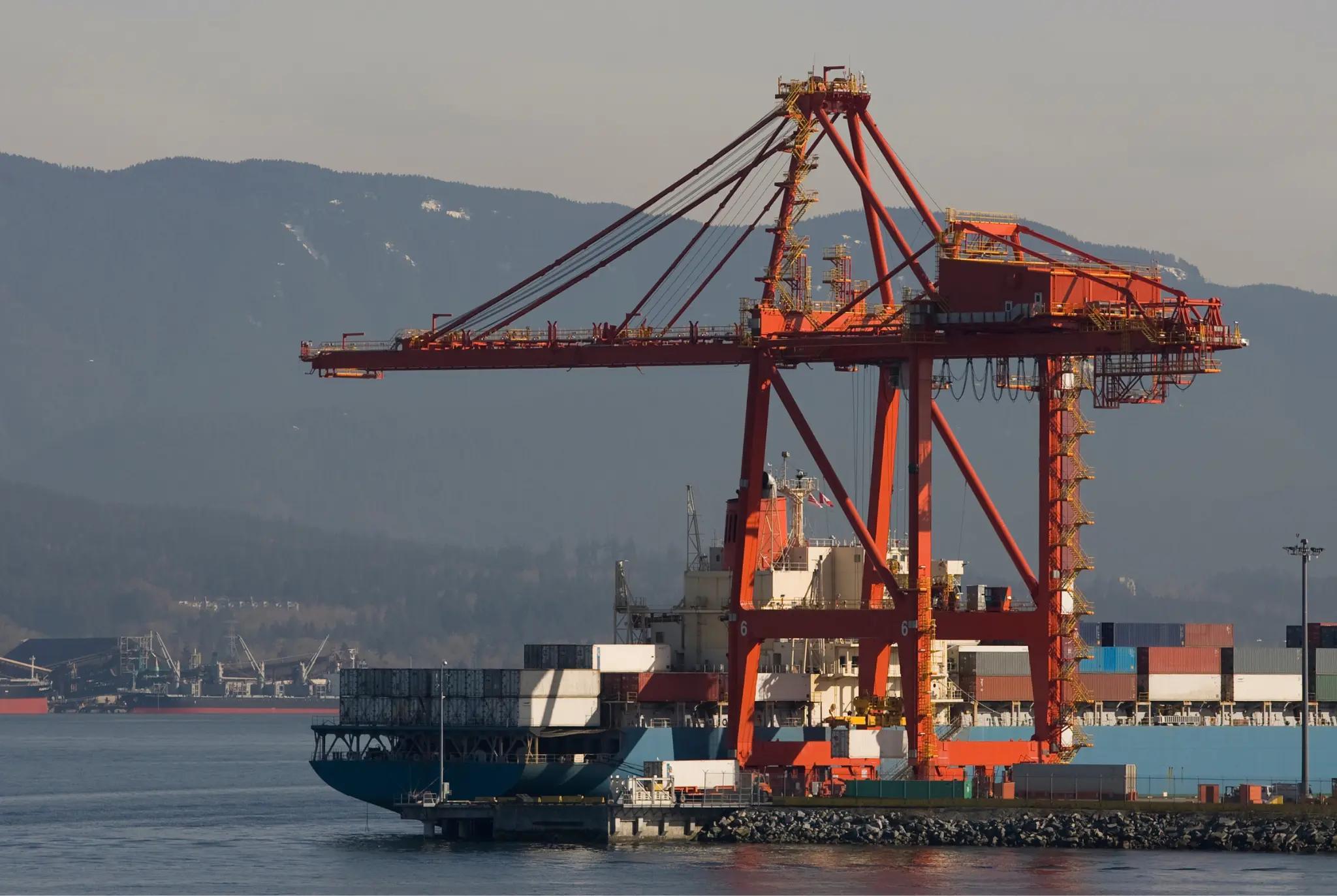We've completed logistics and supply chain automation projects in weeks that our customers were told would take months. We finish integrations fast, freeing up resources to focus on innovation and service without bogging down internal IT teams.
Automation In Logistics
As businesses seek opportunities to increase their competitive advantage in their industries, automation in logistics has been considered among the leading ways to boost margins, improve customer satisfaction, and streamline operations.
What is logistics automation?
Logistics automation is used to describe the technology, including machinery and software, that is used to improve a company’s logistical processes at varying levels, including procurement, production, inventory management, and distribution.
These new supply chain technologies can include artificial intelligence (AI), IIoT (the Industrial Internet of Things), autonomous mobile robots, drones, automated storage and retrieval systems (AS/RS), and big data.
Logistics warehouse automation, for example, may include the use of robotic arms, software, and automated guided vehicles (AGVs) to increase the efficiency, safety, and accuracy of warehouse processes.
Automation in Logistics Industry
Another component of logistics automation includes automation in transportation industry activities and innovation through supply chain automation initiatives.
What do logistics automations do? Here are some of the reasons why an increasing number of businesses are automating their logistics processes:
Meet and exceed customer expectations. With the ability to cut processes and shipment times through automation in logistics, companies are able to more quickly meet their customer expectations. As an increasing number of consumers start expecting efficiency with their purchases, retail companies that can't deliver to these expectations may be at a disadvantage. Similarly, Logistics Service Providers that can't meet their shipper customer's expectations will also fall behind their competition. Logistics automation is instrumental in replacing manual operations that can cause delays.
Accurate data. Any successful company must manage thousands of orders, products, invoices, and other tasks that involve various departments. Through automation that collects and analyzes data from various points in a business operation, a company can significantly streamline processes as well as gain more accurate data insights and analytics to guide business planning and forecasting.
Faster processes. One of the most compelling reasons for automation is the ability to gain efficiencies in time-consuming tasks. By speeding up numerous tasks, including order processing, waybill printing, and payment verification, companies can turn around orders more quickly and potentially increase the volume of orders.
Minimize errors. With manual data entry, the potential for making errors — such as entering duplicate information — is much higher than with automated logistics software.
Lower logistics costs. Through automation, companies can minimize warehouse cost and port demurrage fees that can result from logistical delays.
Benefits Of Automation In Logistics
While the benefits of automation in logistics are significant, some companies may be hesitant to invest in the process of transitioning from old systems to new systems.
Barriers to automation can occur at different levels of the organization. For example, some decision-makers and executives may readily recognize the long-term benefits of automation in supply chain, while other department managers may be hesitant about adoption because of the complexities and expenses involved in the process.
Some concerns can be perceived as vulnerabilities because of the transparency that comes with the integration of data and processes among supply chain partners, both internally and externally. Some managers may be concerned about stepping away from hierarchal models of leadership in which information is only passed from the top down.
Resistance to automation software adoption also may be related to the upfront financial investment. Since many companies don't have the internal resources or expertise to initiate supply chain integration — including the difficulties of updating old systems with new technology, they may be reluctant to get on board with the change. They also may be concerned about the costs of purchasing new software, changes in processes, and employee training required for the transition.
However, with the evident benefits of automation in supply chain, including logistics efficiency and supply chain optimization, many companies have decided to make the transition at different levels.
The benefits of supply chain efficiency include the enhanced ability to integrate supply activities, including manufacturing, procurement, and logistics, with demand activities, including sales, production, and customer service and support. Internally, it also allows companies to gain insights to better manage their inventory, adjusting it as necessary based on more accurate predictions about supply and demand.
With supply chain software integrations with partners, companies can keep suppliers and customers informed about the location of shipments, changes in product availability, and estimated time of delivery.
At all phases of the supply chain, companies can realize opportunities to minimize costs and better meet customer expectations.
Examples Of Automation In Logistics
Companies are streamlining operations with self-driving forklifts that are autonomously taking on tasks previously performed by employees, drones that deliver packages to customers, robots used in automated sorting systems, and inventory control systems.
These logistics automation examples are just a few of the innovations transforming company operations. Some types of logistics automation systems also include TMS integrations, WMS integrations, ERP integrations, and OMS integrations, which are explained below.
TMS integrations. The use of a transportation management system as part of automated logistics operation involves specialized software that is used for planning and optimizing the shipment of products. TMS software is considered one of the core technologies for reducing costs and increasing a wide range of efficiencies related to shipping. One of the most common TMS connections is to real-time supply chain visibility platforms, which gives freight forwarders and shippers better insights into the status of their shipments.
WMS integrations. A warehouse management system (WMS) is a software solution that enhances visibility into a company's inventory, allowing users to better manage supply chain fulfillment operations at various levels through the entire global supply chain, including distribution and manufacturing. WMS integrations help companies optimize resource usage and material flows.
ERP integrations. An enterprise resource planning (ERP) system is software that gives organizations the ability to automate numerous business functions, including procurement, compliance, project management, and accounting. ERPs have been credited for increasing efficiencies and minimizing errors.
OMS integrations. Order management systems give businesses the ability to automate sales processes, such as tracking and fulfilling orders. As part of an automated logistics process, this software helps eliminate inaccuracies with orders, tracks inventory stock levels, and coordinates with third-party logistics providers.
Logistics Automation Trends
Robotics and automation in logistics are among the leading logistics automation trends in the industry, based on numerous reports about the future of the industry.
With DHL robotics in logistics and other technologies making gains in various industries, the logistics robots market is expected to reach nearly 50 billion by 2027 — up from $11.7 billion in 2021, according to the Logistics Robots Marketing: Global Industry, Trends, Share, Size, Growth, Opportunity, and Forecast 2022-2027.
Digital twins. Also, referred to as digital supply chain twin or DSCT, this software represents the digital version of a physical supply chain. DSCT serves as the foundation for end-to-end decision-making for teams, enabling them to ensure that all aspects of the supply chain are aligned vertically and horizontally. As a result, companies can utilize more accurate and faster decision-making capabilities when engaged in external activities.
Predictive automation. With predictive automation, companies can leverage predictive analytics to increase profitability, enhance operations, forecast sales and customer demand, and improve overall operations. The market for predictive analytics, which is an AI tactic, was on course to hit $10.9 billion by the end of 2022.
AR/VR. Augmented reality (AR) and virtual reality (VR) in logistics have been instrumental in helping companies train their employees and manage their warehouses. For example, companies use AR with order-picking processes so that they can be more productive as well as minimize errors.
Logistics Automation Integrations
After the supply chain disruptions caused by the COVID-19 pandemic, the demand for logistics solutions, such as supply chain integrations and logistics automation integrations, has surged. By some estimates, the logistics automation market is expected to reach $147.4 billion by 2030.
Logistics automation companies that specialize in data integration solutions, software platforms, and other technologies are meeting the demand for companies seeking ways to streamline their operations, minimize the impact of disruptive events, and increase their profit margins.
Chain.io is among the leaders in the supply chain industry for logistics automation and integrations solutions. As the only supply chain-specific integration and automation platform on the market, Chain.io integrates data between systems to give freight forwarders, shippers, and software providers better insights and access to their data. Clients can use these advantages to make better business decisions, save time, cut costs, and improve customer service.
Automating Logistics Operations
As a supply chain integrations company, Chain.io works with companies to help them gain end-to-end visibility throughout their supply chain systems.
Chain.io’s holistic business process integrations digitally transform and simplify the process of gaining insights from supply chain and logistics data. It also provides solutions to improve all of the core business processes related to moving freight.
Chain.io’s team integrates data from partners and customers along the global supply chain, including freight forwarders, 3PLs, and 4PLs, into platforms from the top logistics software companies. Chain.io integrations connect the latest SaaS platforms, legacy supply chain systems, and internal systems faster than internal teams and generic iPaas platforms.
The pre-built and custom integrations and solutions provided by Chain.io give clients real-time insights that inform better decisions on cutting costs, increasing revenue, and exceeding customer expectations.







